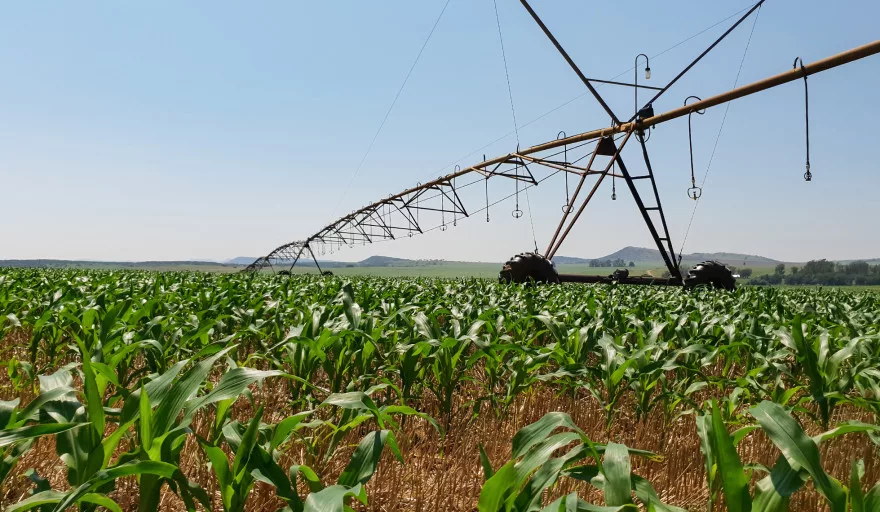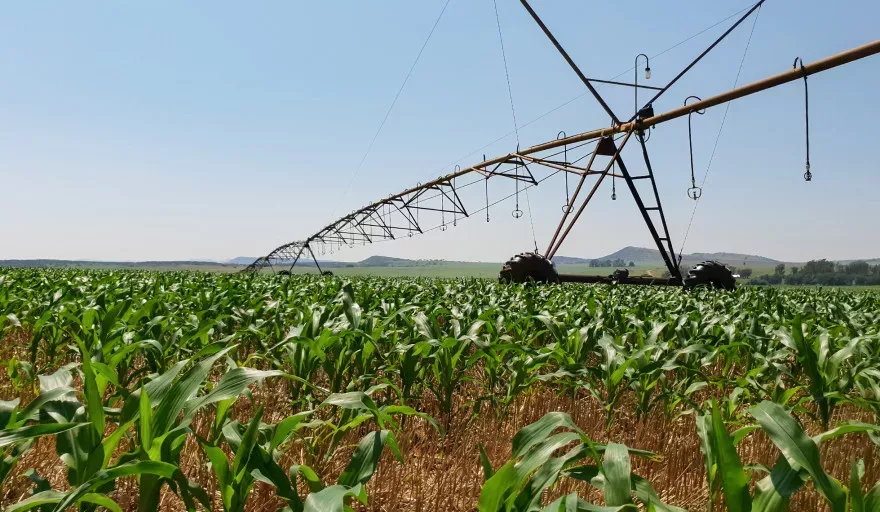
African agriculture is the fuel for continental economic growth, but the industry faces new challenges caused by recent events
Written by: Marcus Kääpä
Agriculture is one of the oldest and most traditional forms of industry.
When human societies took the great leap from hunter-gatherers to farmers through the revelations of animal husbandry and sowing crops, a greater yield of food led to the gradual support of much larger populations than previous migrating tribes. These populations settled into villages, towns, and cities, some of which have survived to this day.
In the present, agriculture remains the greatest contributing industry to many countries and their economies, but few rely so much on agriculture than those of the African continent. In 2004, agriculture made up 17 percent of Africa’s GDP, 40 percent of its foreign currency earnings, as well as providing livelihoods to over 60 percent of the continental population.
And with a population explosion over the past decades, managing to feed such a growing number of people has become one of the most important requirements for the region. Agriculture has become more important than ever, yet there is a continual percentage decrease in the proportion of the population who work in rural agricultural jobs compared to a rising number of urban dwellers.
Urban demand
This shift in rural-to-urban living comes down to many factors. One such driving force is the search for urban-based work to earn a better wage and make a better living.
As African urban centres grow, the demands facing farmers and other agricultural workers have never been so high. According to the 2020 Africa Agriculture Status Report (AASR), currently towns under 100,000 people account for one third of Africa’s population, over 50 percent of the continent’s urban population collectively live in cities of less than 500,000 individuals, and as of 2015 a recorded 42 “mega-cities” that house over two million people each were acknowledged.
This is not the only focus of African growing population. Smaller villages and towns all over the continent are expanding rapidly, and through this explosive rise in numbers African urban agricultural markets are drastically growing to keep up with the task of feeding the population.
2020’s AASR states the following: “Africa’s cities currently provide the largest and most rapidly growing agricultural markets in Africa. Out of total urban food sales of roughly US$200 to US$250 billion per year, over 80 percent comes from domestic African suppliers. In the coming decades, demographic projections forecast rates of African urbanisation as the highest in the world.
“Africa’s rapidly growing cities and food markets offer the largest and fastest growing market opportunity available to the continent’s 60 million farms.”
The 2020 AASR goes on to note that Africa’s urban population will increase at a rate of 3.5 percent annually from 2015 to 2025, which is double the estimated rate of Asia, and triple that of Latin America based on statistics taken from the UN in 2018.
Demands for different produce in the market forces agricultural workers to adapt and work far harder than they have done previously. If they cannot provide the produce which is demanded of their industry, buyers turn to alternative sources of such foods such as imports.
In response to this, African governments have attempted to increase an inclusivity of growth through rural agriculture investment. But intertwined with the explosion of populations within Africa, many obstacles have arisen to make the implementation of government plans difficult to pull off.
The challenges posed
First to address the elephant in the room. COVID-19 has destabilised the global norm for almost every industry. In Africa, national and local governments are struggling with efficiency, safety, and protection for urban food supplies and vulnerable close-knit city populations.
During the lockdown (and continuing restrictions) business closures led to a large rise in job losses as well as restrictions on a multitude of trades. These COVID-19 effects resulted in a greater proportion of low-income workers suffering disproportionally compared to the rest of the population. The consequence – a reduction of purchasing power for those low-income workers in urban areas that increased the suffering of populations most affected by malnutrition.
The virus has further added pressure and issues to food supply chains. Restrictions of contact and supply chain disruption has caused more difficulty to the important challenge of feeding African urban populations.
And yet other challenges land on top of those caused by the global pandemic.
The agricultural sector, and all those who work within it, are faced by many obstacles, one of which comes in the form of an ever-evolving urban demand for varied food produce.
“Farmers must find ways to intensify food production in the face of increasing land pressure and rising wage rates,” AASR states. “They must simultaneously diversify production to meet shifting demand for high-value perishables such as poultry, dairy, livestock, and horticultural products.
“In the face of mounting food imports from overseas, African farmers, traders, and wholesalers must find ways to drive down domestic costs of production, storage, and distribution in order to remain competitive with external suppliers in Brazil, North America, Europe, and Asia.”
The demands for produce such as processed foods means that the primary force behind food production is also shifting away from rural farmers to city-based factories and processing plants.
This reality squeezes rural workers between the increased competition to sell their produce, but additionally the low (or existing) rate of pay for what they yield. This leads to agricultural workers maximising their individual input for little more than what they earned prior.
Altogether, these challenges mean that the growth and demand for farmer yield does not equate to the low growth of individual farmers’ wages.
This itself leads to more migration from the rural based populace to urban areas in search of a better livelihood, consequently causing a greater level of over-population, unemployment, and for the collective nations overall, an economy that is underserved by agriculture.
Inclusivity
With growing urban populations, produce demand, and migration away from rural locations, the governments of many African nations are investing in the agricultural industry and mass individual rural workers.
Raising the financial and living prospects of these workers will lower or even reverse the pattern of the staggering urban population shift seen over the course of the past few decades.
Meanwhile, it will provide more people with the desired livelihood in rural areas (consequently attracting more people back from urban areas to those of rural) – the cut back of unemployment will sufficiently raise the continental economy, and still allow for progressive the urban development necessary in the world today.
This kind of plan will increase the general inclusivity of growth among African people (urban and rural), allowing a greater level of fair and proportionate earning among them, leading to better welfare and living standards across the board.































